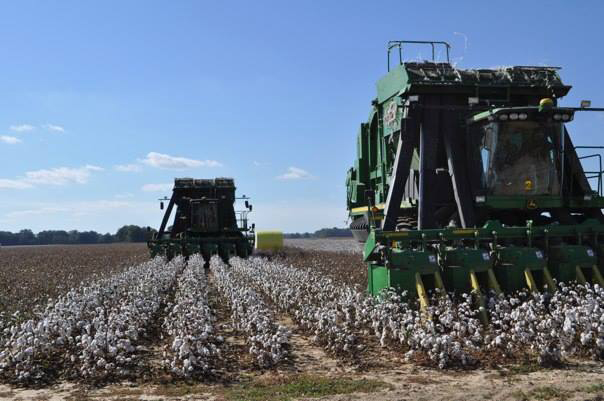NASS forecasts all-time low cotton harvested acres for Ark
Fast facts:
- NASS projecting 205,000 cotton acres harvested, an all time low
- Low prices helped keep cotton acres under wraps
By Mary Hightower
U of A System Division of Agriculture
(582 words)
(With file art available at www.flickr.com/photos/uacescomm/15312144809)
LITTLE ROCK – Arkansas may see a new record low for harvested acres of cotton this year, the National Agricultural Statistics Service said on Wednesday. However, no one seemed surprised.
The Crop Production Report from the statistics arm of the U.S. Department of Agriculture, was also forecasting a record low for harvested acres in Louisiana and a significant decline in harvested acres in Mississippi.

NASS said that as of Dec. 1, cotton production in Arkansas was forecast at 480,000 bales, unchanged from the Nov. 1 forecast, but 307,000 bales down from last year. Yield is expected to average 1,124 pounds per harvested acre, unchanged from last month but down 21 pounds from 2014.
“Harvested acreage is estimated at 205,000 acres, down 125,000 acres from 2014,” the report said. “If realized, this would be a new record low for cotton harvested acres for the state.”
“I’m not surprised,” said Bill Robertson, extension cotton agronomist for the University of Arkansas System Division of Agriculture. “A wet and cold April resulted in late start, short planting windows in May limit number of planting days forcing some cotton to shift to other crops.”
On the market side, no one was surprised either, said Scott Stiles, extension economist for the University of Arkansas System Division of Agriculture.
“The trade wasn't anticipating a great deal of change going into the report,” he said. “We've mentioned many times that the price was certainly a factor in planting decisions.
“Most of the 2015 crop is marketed basis the December futures,” Stiles said. “The range for the 2015 contract this year was from a low of 59.70 to a high of 68.11. With prices starting the year around the 62-63 cent level, a desirable price for growers just didn't present itself.”
Prices for and the cost of growing competing crops was a factor in cotton's decline.
For example, “November soybeans futures offered opportunities in five months this year to make sales at $10 or better,” Stiles said, adding that cotton growers are seeking more profitable options. “Many growers have simply gotten rid of their cotton equipment and opted to grow less costly, less management intensive crops, like soybeans.”
Export demand
USDA trimmed 200,000 bales off of U.S. export demand for the 2015 crop, “which may be the beginning of a trend,” Stiles said.
As of Nov. 26, the U.S. had sold almost 4.6 million bales of upland cotton for the 2015 marketing year. Last year at the same time, the U.S. had sold about 6.7 million bales.
“This sharp difference represents a 32 percent drop in export sales year over year,” Stiles said. “This is worrisome in the sense that the USDA is currently forecasting a decline of only 11 percent from last year. One of the key reasons behind this dramatic drop in sales in the lack of purchases by China.”
At this point last year, China had purchased more than 1.2 million bales from the U.S. “Thus far, they've only bought 169,540 bales,” he said.
The cut to export demand in today's report was more than offset by the 250,000 bale cut in production. Projected carry-out now stands at 3 million bales versus 3.1 million last month.
Total US cotton production is forecast at 13 million bales, down 3.29 million bales from last year. Yield is expected to be 768 pounds per harvested acre, down 70 pounds from last year. Producers expect to harvest 8.15 million acres, also down from 2014, by 2.1 million acres.
“The next USDA Crop Production report will be released January 12,” Stiles said. “It will include the USDA's final estimate of 2015 production.”
For more information on crop production, visit www.uaex.uada.edu or contact your county extension office.
Pursuant to 7 CFR § 15.3, the University of Arkansas System Division of Agriculture offers all its Extension and Research programs and services (including employment) without regard to race, color, sex, national origin, religion, age, disability, marital or veteran status, genetic information, sexual preference, pregnancy or any other legally protected status, and is an equal opportunity institution.
Media Contact: Mary Hightower
Dir. of Communication Services
U of A Division of Agriculture
(501) 671-2126
mhightower@uada.edu
Related Links